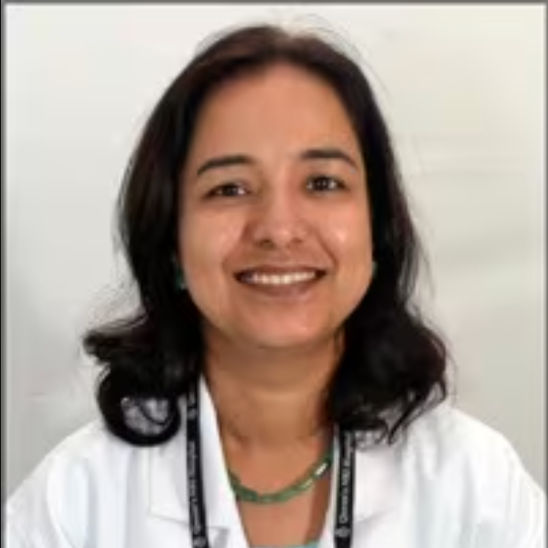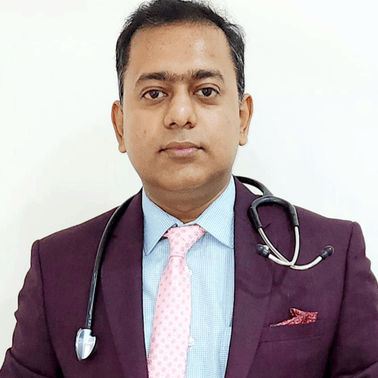Cervical Cancer Screening Frequency: Causes, Tests, and Prevention
Learn about cervical cancer screening guidelines, its types, causes, diagnosis, and benefits, along with key prevention and treatment options for improved health outcomes.

Written by Dr Sonia Bhatt
Last updated on 3rd Jul, 2025
Cervical cancer screening is designed to detect abnormal cell changes in the cervix that could lead to cancer. Early detection of cervical cancer makes treatment easier and more successful.
Human papillomavirus (HPV) infection is the primary cause of this cancer, with women living with human immunodeficiency virus (HIV) facing a six-fold higher risk. Preventive measures like the HPV vaccine and regular screening are effective and cost-efficient in reducing this risk.
This article gives a detailed insight into cervical cancer screening frequency, its types, risk factors, benefits, and current research.
Risk Factors of Cervical Cancer
Various factors increase the risk of HPV infection and cervical cancer:
Smoking raises the chance of developing cervical cancer. Smokers are more likely to contract HPV infections, which persist longer and are less likely to resolve.
Having sex at an early age increases the risk of contracting HPV.
Women with HPV and a weakened immune system are more likely to develop cervical cancer.
The use of diethylstilbestrol (DES) during pregnancy may increase the risk of cervical cancer.
Using oral contraceptives for five years or more can increase the risk of cervical cancer.
Obesity can make it harder to detect precancerous tumours and increase the risk of developing cervical cancer.
Cervical Cancer Screening Guidelines
The appropriate cervical cancer screening schedule and tests a woman should undergo depend on her age and individual health history. Even if a woman has received the HPV vaccine, which does not protect against all high-risk HPV strains, it is essential for her to follow the recommended screening guidelines.
Here are the general screening recommendations based on age and medical background:
Age 21-29 years
For women in this age group, it is recommended to have a Pap test every three years. HPV testing may also be considered during this period.
Age 30-65 years
Women in this age group should choose one of the following options for cervical cancer screening:
HPV test every 5 years
HPV/Pap co-test every 5 years
Pap test every 3 years
Age 65 and older
Women over the age of 65 should consult with their healthcare provider to assess if continued screening is necessary. If they have had regular screenings with normal results, they may not need further testing. However, if their previous tests were abnormal or they haven't been regularly tested, ongoing screening may be required.
Types of Cervical Cancer Screening Tests
There are three main types of cervical cancer screening tests, which are as follows:
HPV Test: In this test, a doctor checks for the presence of the human papillomavirus (HPV), which can cause cervical cancer.
Pap test: It collects cervical cells to check for changes caused by HPV.
HPV/Pap Co-Test: This test combines the HPV test and the Pap test to check for both high-risk HPV and cervical cell changes.
Therefore, the frequency of cervical cancer screening and the type of test one should get depends on their age and health history.
Consult Top Doctors for Cervical Cancer
Benefits of Regular Cervical Cancer Screening
Health professionals recommend regular cervical cancer screenings, as early detection significantly increases the chances of successful treatment. Screenings are essential in lowering a woman's risk of developing advanced cervical cancer.
The benefits of regular cervical cancer screening include:
Detecting HPV before it leads to abnormal cell changes in the cervix
Identifying abnormal cell changes before symptoms develop
Enabling early treatment of abnormal cell changes
Potential Risks and Limitations of Screening
Cervical cancer screening has some potential risks and limitations, including:
False Positives: A Pap test can sometimes show abnormal cells when there are none, which can lead to unnecessary tests and procedures. This can cause anxiety and worry.
False Negatives: A Pap test can sometimes appear normal even when there is a cervical precancer or cancer, which can delay medical care.
Pain, Discomfort, or Embarrassment: Some people may find the test uncomfortable or embarrassing.
Overtreatment: Treatment for cervical abnormalities may lead to a higher risk of miscarriage or premature birth for younger women.
Screening for High-Risk Populations in Cervical Cancer
Women at high risk for cervical cancer should have more frequent cervical cancer screenings. Some groups that are considered high-risk include:
Women who have had a solid organ transplant
Women who have had a hematopoietic stem cell transplant
Women with systemic lupus erythematosus
Women with inflammatory bowel disease or rheumatoid arthritis
Therefore, for high-risk women, it is recommended to undergo annual cervical cytological testing along with age-appropriate reflex HPV testing or co-testing every three years.
Current Research and Future Directions in Cervical Cancer
As of 2023, there are six HPV vaccinations available internationally. All protect against high-risk HPV strains 16 and 18, which cause the majority of cervical cancers, and have been proven to be both safe and effective at preventing HPV infection and cervical cancer.
HPV vaccinations should be administered to all females aged 9 to 14 before they become sexually active. The vaccination may be administered in one or two doses. People with weakened immune systems should ideally have two or three doses.
Emerging targeted therapies for advanced cervical cancer, such as immune checkpoint inhibitors (ICIs) and antibody-drug conjugates (ADCs), have the potential to enhance response rates and extend life.
Conclusion
Cervical cancer remains a significant health concern for women globally. Persistent HPV infection is the primary cause, with risk factors such as smoking, obesity, and long-term use of oral contraceptives. Regular cervical cancer screenings are essential for detecting early abnormalities and preventing cancer development.
Screening guidelines vary based on age, medical history, and risk factors. Ongoing research is focused on improving HPV vaccines and developing targeted treatments, offering hope for better prevention and care for cervical cancer.
Consult Top Oncologists
Consult Top Oncologists

Dr. Rupam Manna
Radiation Specialist Oncologist
4 Years • MBBS MD(RADIO THERAPY)
Barasat
Diab-Eat-Ease, Barasat

Dr Gowshikk Rajkumar
Oncologist
10 Years • MBBS, DMRT, DNB in Radiation oncology
Bengaluru
Apollo Clinic, JP nagar, Bengaluru

Dr.sanchayan Mandal
Oncologist
17 Years • MBBS, DrNB( MEDICAL ONCOLOGY), DNB (RADIOTHERAPY),ECMO. PDCR. ASCO
Kolkata
Dr. Sanchayan Mandal Oncology Clinic, Kolkata

Dr Sunita Samleti
Oncologist
18 Years • M.D. (Pathology)- TN Medical College, Mumbai University, Mumbai, Mar 2005 M.B.B.S. Grant Medical College, Mumbai University, Mumbai, Oct 1999
Chinagadila
Apollo Hospitals Health City Unit, Chinagadila

Dr. Sanchayan Mandal
Oncologist
17 Years • MBBS, DNB Raditherapy, DrNB Medical Oncology
East Midnapore
VIVEKANANDA SEBA SADAN, East Midnapore
Consult Top Doctors for Cervical Cancer

Dr. Rupam Manna
Radiation Specialist Oncologist
4 Years • MBBS MD(RADIO THERAPY)
Barasat
Diab-Eat-Ease, Barasat

Dr Gowshikk Rajkumar
Oncologist
10 Years • MBBS, DMRT, DNB in Radiation oncology
Bengaluru
Apollo Clinic, JP nagar, Bengaluru

Dr.sanchayan Mandal
Oncologist
17 Years • MBBS, DrNB( MEDICAL ONCOLOGY), DNB (RADIOTHERAPY),ECMO. PDCR. ASCO
Kolkata
Dr. Sanchayan Mandal Oncology Clinic, Kolkata

Dr Sunita Samleti
Oncologist
18 Years • M.D. (Pathology)- TN Medical College, Mumbai University, Mumbai, Mar 2005 M.B.B.S. Grant Medical College, Mumbai University, Mumbai, Oct 1999
Chinagadila
Apollo Hospitals Health City Unit, Chinagadila

Dr. Sanchayan Mandal
Oncologist
17 Years • MBBS, DNB Raditherapy, DrNB Medical Oncology
East Midnapore
VIVEKANANDA SEBA SADAN, East Midnapore

